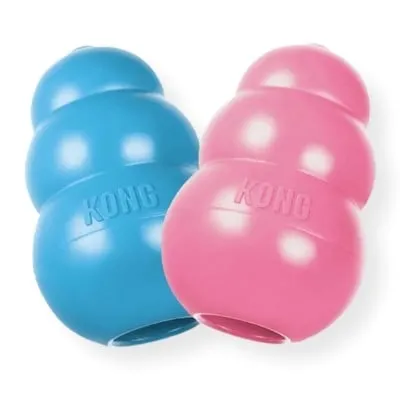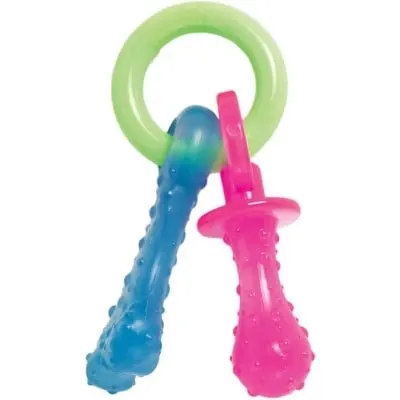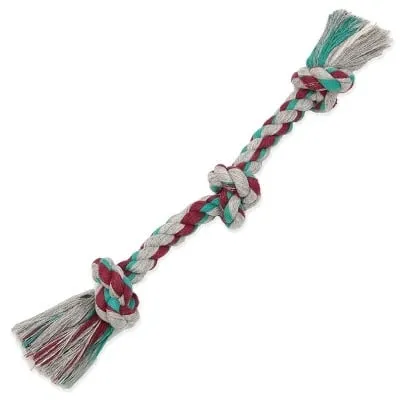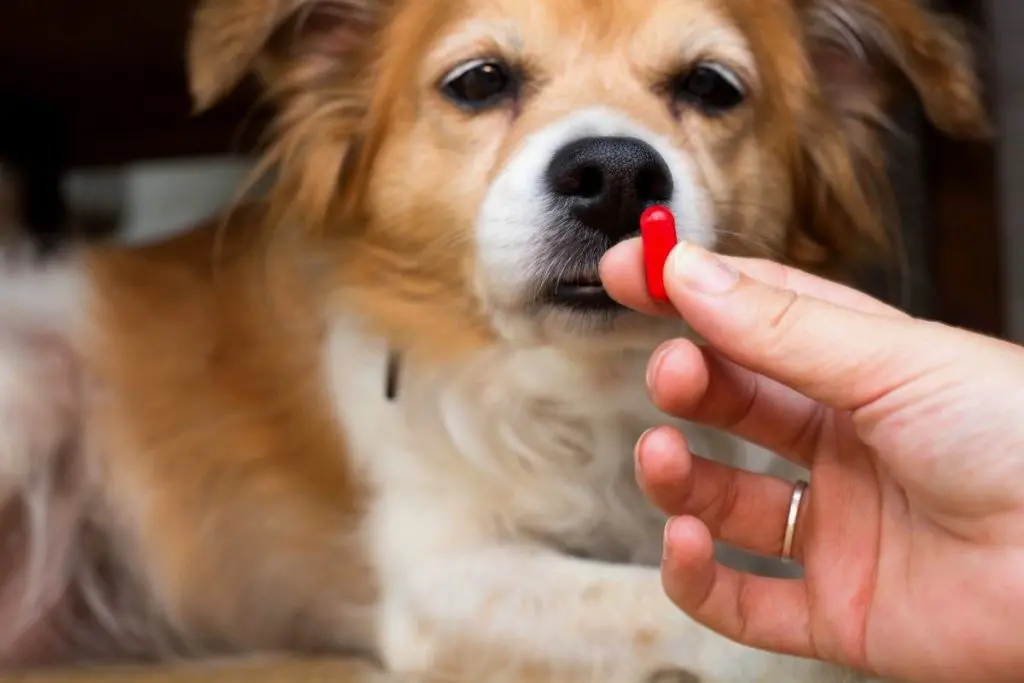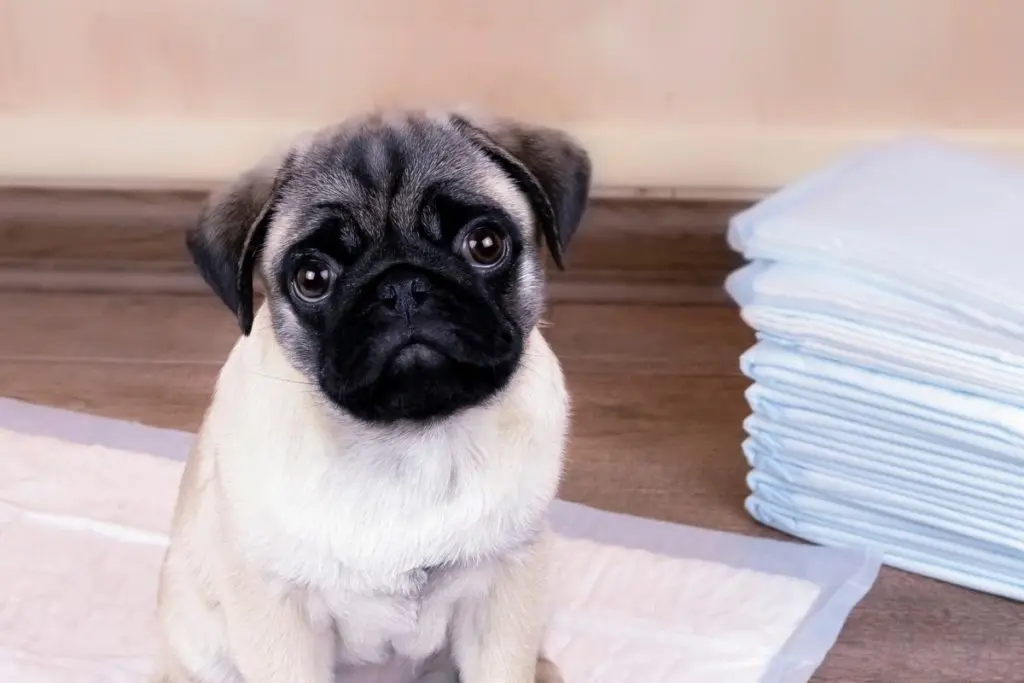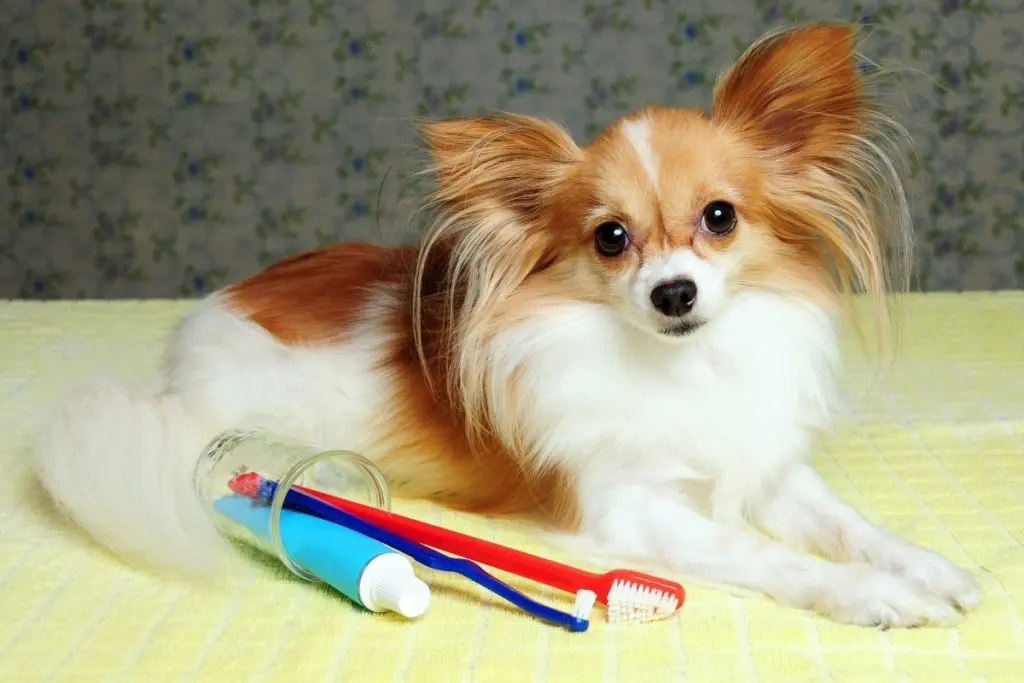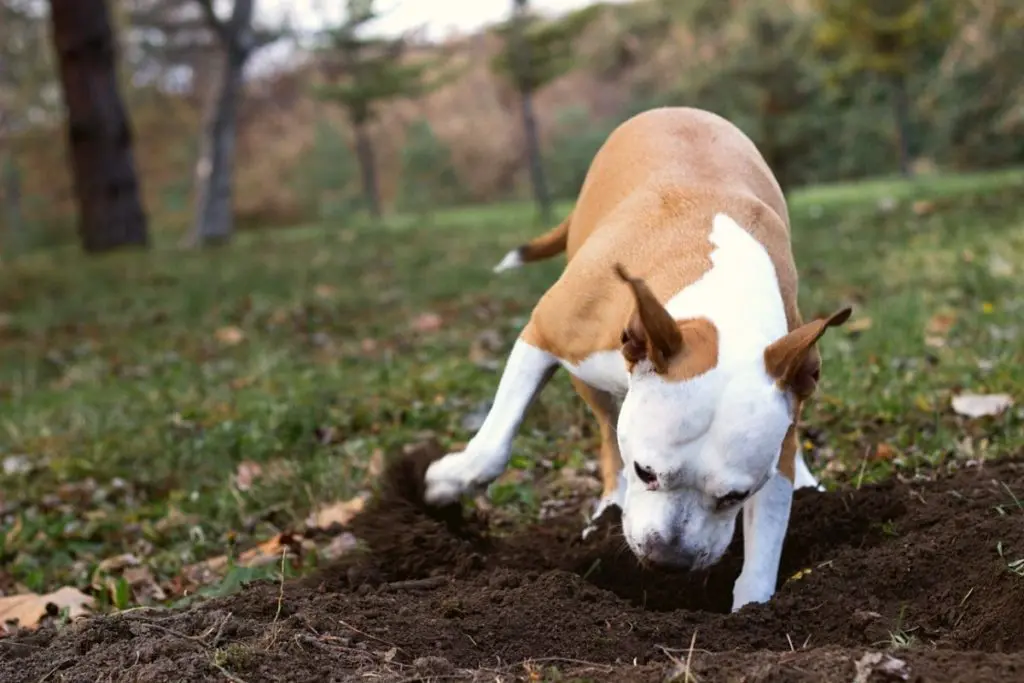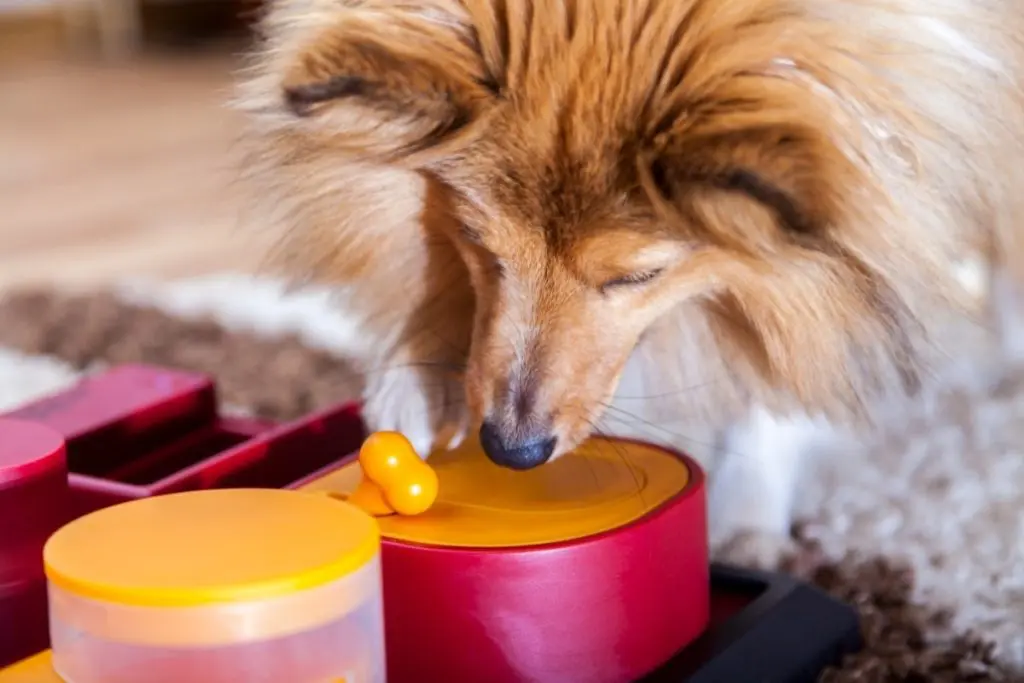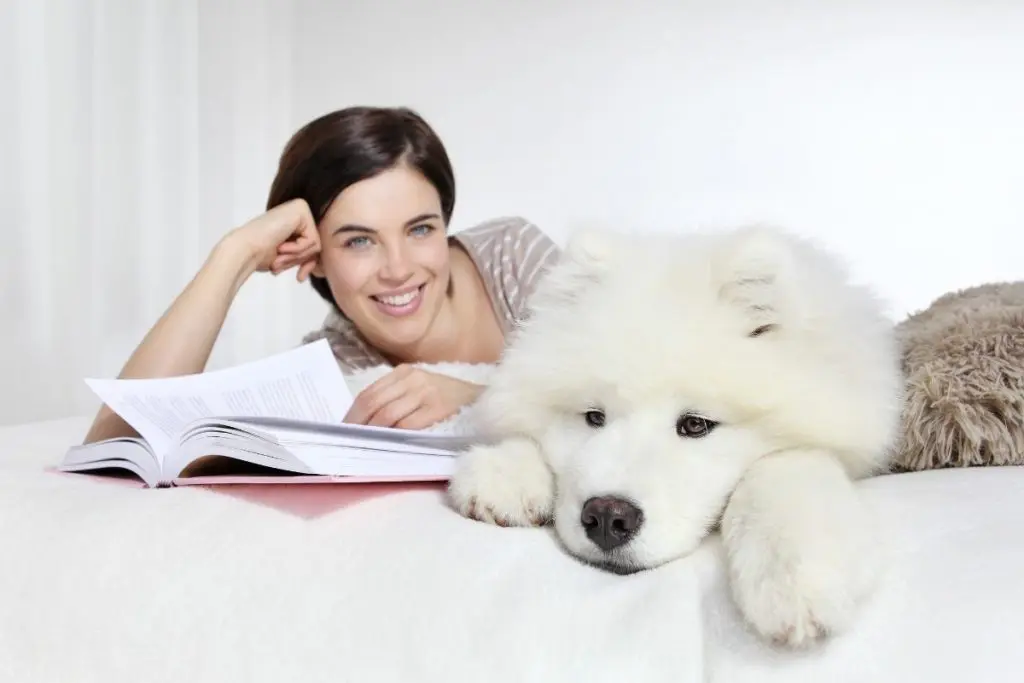When you adopt a puppy, one behavior you’re sure to notice happening a lot is chewing and biting. In this article, we take a look at how to help a teething puppy. Puppies, like most animals, experience life mouth-first. And just like most animals, puppies are born with two sets of teeth: baby (or deciduous) teeth, and permanent adult teeth.
Just like with human babies, the teething milestone can be a painful and frustrating time for puppies. To help you navigate how to help a teething puppy, we’ve assembled this guide on the safest and most effective methods for supporting your pawed pal.
Puppy Teething 101
One of the most commonly asked questions surrounding this topic is: when do puppies begin teething?
Puppies begin to sprout their baby teeth around 2 weeks of age. In total, puppies grow a whopping 28 razer-sharp baby teeth. But they don’t last long.
At approximately 10 weeks of age, puppies begin losing their baby teeth. Often, you won’t even notice this milestone. Puppies tend to swallow their teeth, lose them while outdoors in the yard, or get them embedded in chew toys. But you can help the process along by giving them plenty of things to chew on, which also provides pain relief.
Before you know it, those 28 little shark teeth will fall out to make room for 42 proper adult teeth.
Puppy’s Dental Timeline
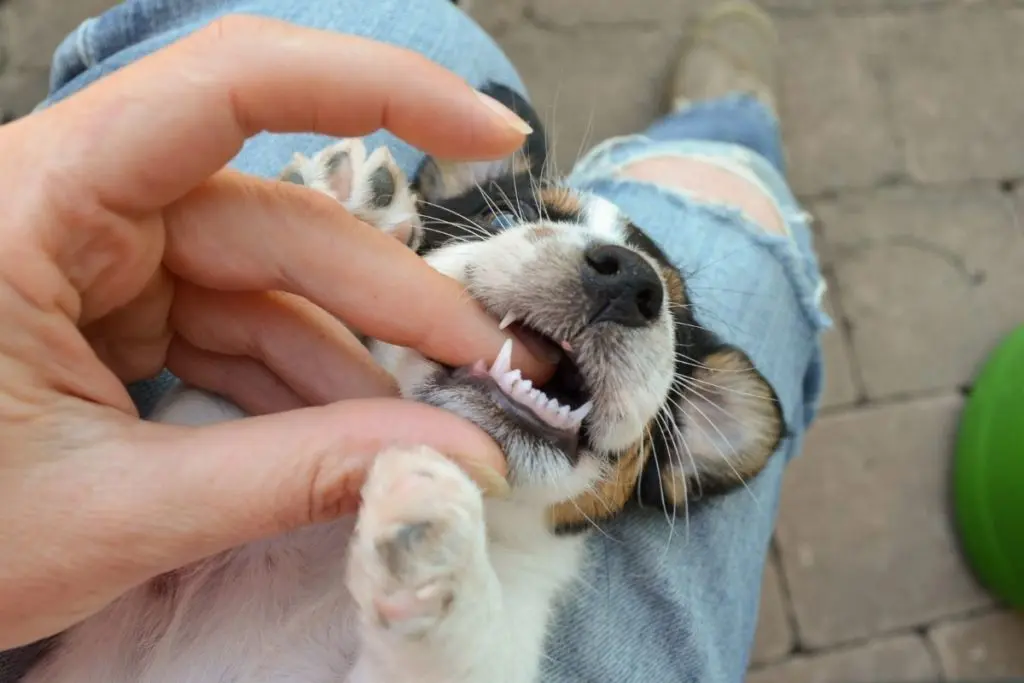
Unless you have a litter of puppies at home or are a breeder, you are not likely to ever see a toothless puppy.
Dogs, like humans, are not born with teeth. However, dogs’ teeth come in much earlier in life than humans’. At about 2 weeks old, puppies’ teeth come in while still with their mothers and nursing. By 6 months of age, your puppy’s mouth should contain 42 permanent teeth and zero baby teeth. At this stage, you should begin brushing their teeth to keep them healthy. Just like humans, dogs only get one set of teeth.
- 2-4 Weeks. Your puppy is still with their mother at this age. Their teeth are beginning to come in while they are still nursing.
- 5-6 Weeks. By now, all of your puppy’s baby teeth have come in. At this stage, puppy should begin weaning off of mom and transitioning to wet food.
- 10-16 Weeks. Puppy’s baby teeth will fall out during this time, so make sure you give them plenty of safe toys to chew on.
- 6 Months. By 6 months of age, all of the puppy’s baby teeth should be out, and all of their adult teeth should be in. If they have any remaining baby teeth, let your veterinarian know.
Signs to Watch for When Your Pup Starts Teething
Here are the signs to watch for as you puppy begins the teething process:
- Excessive drool
- Chewing more than usual
- Traces of blood in drool, on toys, or in water bowl
- Restlessness
- General discomfort
Just like with a human baby, teething puppies can fall anywhere on the spectrum from not showing any signs of discomfort to being utterly miserable. If your puppy is handling teething like a champ, you still need to provide them with enrichment and comfort. Let’s move on to some tips for puppy teething that will take care of their play needs, also.
How to Help a Teething Puppy: Providing Relief
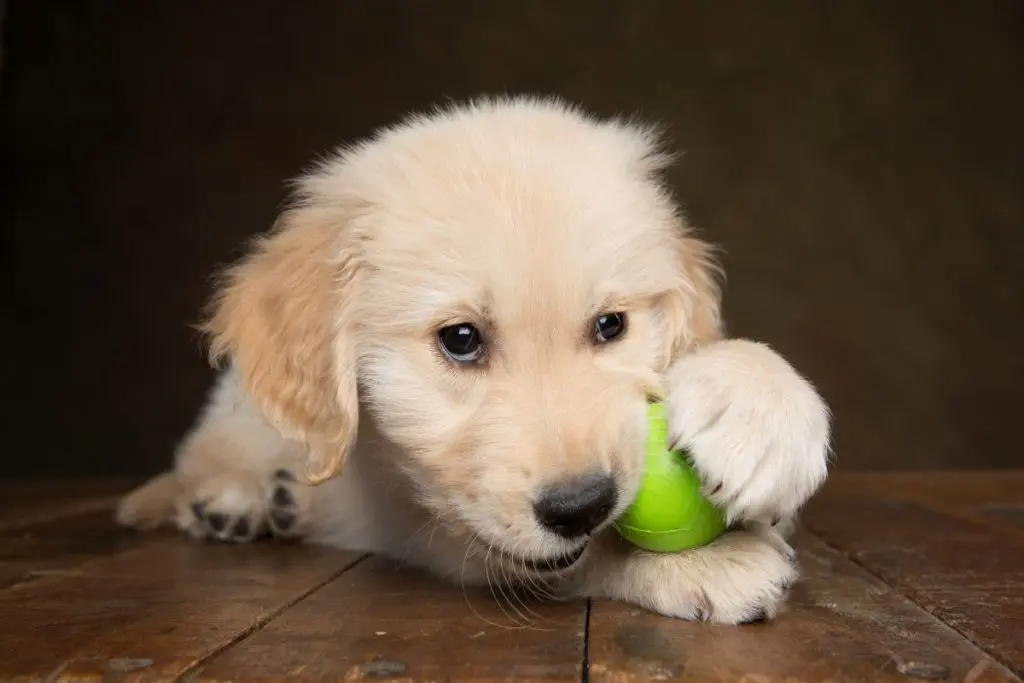
Once you begin to notice teething symptoms, it is imperative that you give your puppy objects designed for teething. Doing so will prevent them from chewing on forbidden items like your shoes, children’s toys, table legs, etc. Not only will providing teething toys give your pup relief, but it will offer plenty of enrichment.
Puppy Teething Tips: Teething Toys
You have probably already provided your puppy with tons of toys to keep them entertained, busy and out of the garbage. Some of these toys can double as teething toys, but here are a few we recommend:
KONG Puppy Dog Toy. KONG is the reigning champion when it comes to chew toys. All of their puppy products are highly recommended and are terrific for teething. You can even fill the KONG puppy toy with treats to help with training too.
Nylabone Teething Pacifier Puppy Chew Toy. Firstly, it looks like a cross between baby keys and a pacifier so it’s extra cute. Secondly, the rubbery nodes feel good on your pup’s gums.
Mammoth Flossy Chews Color Rope Tug. Tugging rope with your puppy will feel so good on their achy teeth and gums. Just don’t tug too hard! If your puppy’s loose tooth gets caught in the rope, don’t keep pulling! Stop the game and free the rope from your puppy’s mouth.
Supervision is required when your puppy is playing with any variety of toy, not just teething toys. Replace rope toys once they begin to fray. Replace rubber toys once they start cracking and pieces begin to break off.
Puppy Teething Tips: Treat Your Puppy to a Pup-sicle
Providing cold relief is another form of therapy for teething puppies. While you should never give your dog ice cubes, there are other delivery methods for cold therapy. How to help a teething puppy can combine with your DIY skills!
Offering cold treats or objects provides numbing relief to sore gums. Gums go through a lot of tearing and healing during the teething process. Not only will frozen objects entertain your pup, but they will also make their mouths feel better.
Different Ways to Make a Pup-sicle:
- Freeze a wet washcloth twisted like a rope, and your puppy can chew on it until it defrosts.
- Freeze plain mini bagels and toss half of the bagel to your pup. The denseness of the bagel dough may remove or further loosen already-loose baby teeth. Once thawed, your puppy can eat the bagel as a treat.
- Cold carrots are not only a great teether, but carrots are a healthy snack for dogs, providing lots of vitamins. Only give your puppy one carrot per day due to its high fiber content.
- Frozen bananas and strawberries are deliciously sweet treats your pup will love. Both fruits are safe for puppies, but don’t give them more than one banana or more than four strawberries per day.
What to Avoid for Your Teething Puppy

Most puppy toys are acceptable while your little fur baby is teething, but some chewing objects are not recommended. In fact, the following are not recommended for any dog, regardless of age. These chewing objects are responsible for some dental health issues. They certainly don’t help maintain a healthy weight in dogs.
Avoid:
- Pigs ears
- Rawhides of any kind
- Bully sticks
- Bones, both genuine and synthetic
- Shed antlers
- Tennis balls, which are non-caloric but unsafe
Instead, reach for toys that are firm but pliable rubber, natural or synthetic fiber rope toys, and silicone toys. As always, never leave your puppy alone with a toy unsupervised. It takes just a split second for your puppy to begin choking or destroying a toy. Take away the toy when you leave the room.
Pain Medications for Puppies Are Not a Thing
Under no circumstances should you give your puppy any human pain medication, including but not limited to:
- Acetaminophen
- Ibuprofen
- Naproxen
- Any other NSAID not listed
Human prescription medications are also unsafe for dogs unless otherwise stated as a recommended therapy for your puppy by their veterinarian. There are prescription canine pain medications like carprofen or gabapentin. However, your puppy would likely need to show extreme signs of discomfort and pain to need a pain medication. Use of medications like NSAIDs can have long-term effects, so use at a young age is not recommended.
For the record, there are no over the counter pain medications for dogs that have any scientifically proven benefits. Products claiming to be ‘like aspirin for dogs’ legally cannot contain any analgesics (pain relievers). Their effects, if any, are psychosomatic or purely coincidental.
How to Help a Puppy With Teething in a Responsible Manner
Watching your puppy suffer from tooth pain can be heartbreaking, and you might desperate for a quick solution. Orajel and Ambesol are two of the most common oral pain-numbing gels available. These products are for humans only. Their active ingredient — benzocaine — is in too-high of a dose. This makes it unsafe for pets. Most oral numbing gels contain 10% to 20% benzocaine. A safer — but not 100% risk-free — amount is 3% to 4% benzocaine.
If you feel helpless and want to offer your pet some relief, clove oil is one of many holistic options. Clove oil contains a chemical called eugenol, which acts as an anesthetic and antibacterial agent. Clove oil is anti-inflammatory and antifungal. It is available from many supermarkets, drug stores, health food shops or can be bought online. It has a strong, warm and spicy taste. To use it as an analgesic for your puppy, dip a clean tissue, cotton swab or cotton ball into the oil and wipe it over the gums at the point of the pain.
There are long-term effects to this treatment, so use clove oil sparingly. Ingesting clove oil can make your puppy sick, so if you choose this method, be cautious and don’t overdo it. Used correctly, clove oil can help your dog feel much better while teething.
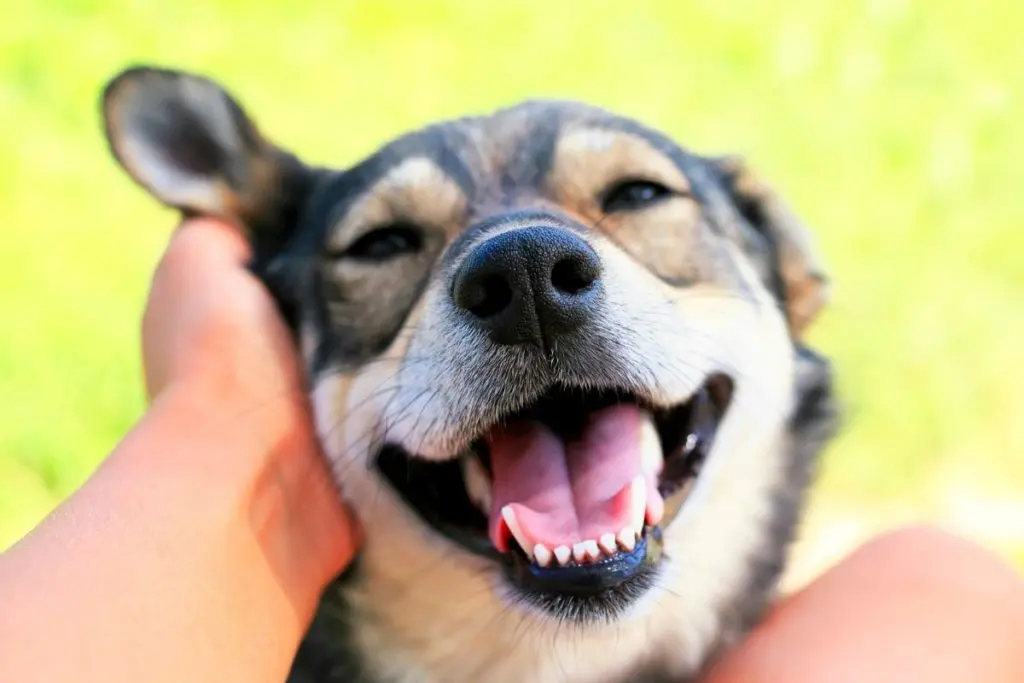
Dental Issues in Puppies
Puppies don’t keep their baby teeth for very long, but a lot can happen in just a few short months to change their dental landscape. However, problems with baby teeth are few and far between. A pup will rarely have a dental problem that is serious enough to require referral to a veterinary dentist. With proper dental care you can avoid most of these issues, while others are genetic, or due to poor breeding.
Too Many Teeth: The Tale of Retained Deciduous Teeth
Some breeds — specifically smaller and brachycephalic (short-nosed) breeds — tend to retain some of their deciduous teeth. The most usual site is the upper canine teeth, although it can happen anywhere.
Retained baby teeth can cause malocclusion (misaligned teeth leading to a poor bite) and discomfort. They also predispose dogs to future dental problems. Food can get trapped between the retained deciduous teeth, the permanent teeth, and the gums, causing periodontal disease. Retained baby teeth need to come out ASAP.
Often, vets can extract these extraneous teeth while your puppy is under general anesthesia for their spay or neuter.
Crooked Smiles and Wry Bites
Small and brachycephalic breeds are most likely to be born with wry bite, overbite or underbite. A wry bite means that their top and bottom jaws do not sync up. Most puppies are born with a slight overbite. It allows them to successfully nurse. As they grow, this overbite evens out, and the pup’s jaws should line up. Breeds like boxers, bulldogs, and even chihuahuas have underbites by design. You can spot an overbite on some German Shepherds, dachshunds, collies, and shelties. It isn’t technically a breed characteristic, but it is something often spotted on these breeds.
Tooth Discoloration and Fractures
Puppy teeth are just as strong as adult teeth and can sustain injuries and trauma just as easily. A puppy who is playing rough and hits their tooth on something firm could end up with a bruised and discolored tooth. This is called pulpitis. A bruised tooth needs to come out, but baby teeth are already destined to fall out. Most veterinarians will recommend leaving the tooth alone and letting it fall out on its own. Fractures, on the other hand, can be quite problematic. Even a fractured deciduous tooth can cause gum issues and trauma to its surrounding teeth if not extracted.
Enamel Defects
During tooth enamel development on both baby and permanent teeth, fevers and the deposition of chemicals within the tooth may cause permanent damage. The canine distemper virus is especially damaging because it both attacks the enamel-producing cells of the teeth and causes a fever. This results in tooth enamel that is thinner than normal. Other fever-causing diseases may result in enamel that does not develop properly and is weaker than usual. Severe malnutrition in young dogs may result in enamel defects. Enamel defects in isolated teeth are most likely the result of trauma or infection.
Often, the infections in fractured baby teeth affect the enamel of the permanent teeth that come in behind them. Enamel defects may also be inherited, especially in Siberian Huskies. Treatment of these conditions can include bonding of synthetic materials to the teeth, fluoride treatment, and frequent dental preventive care.
Daily Routines Create Good Habits
Puppies may not hold onto their baby teeth for very long, but it is essential that you maintain their oral health for their entire life. Adult teeth can be affected if deciduous teeth are troublesome. Issues involving permanent teeth can be costly and painful. Taking care of your dog’s teeth from day one is optimal.
Brush your pup’s teeth once per day. Use dog toothpaste and finger toothbrush, human toothbrush, or dog toothbrush. If you start this habit when your dog is a puppy, they will be accustomed to having a human’s fingers and hands in their mouth.
Further Reading

